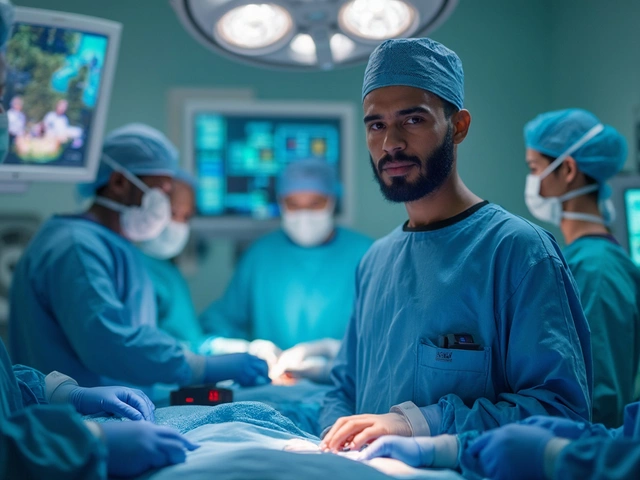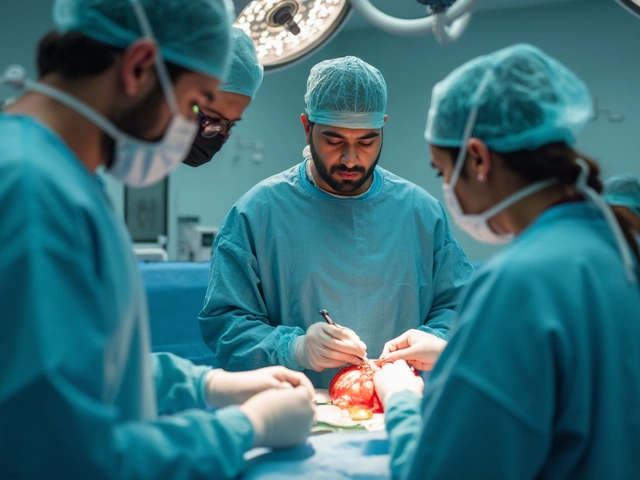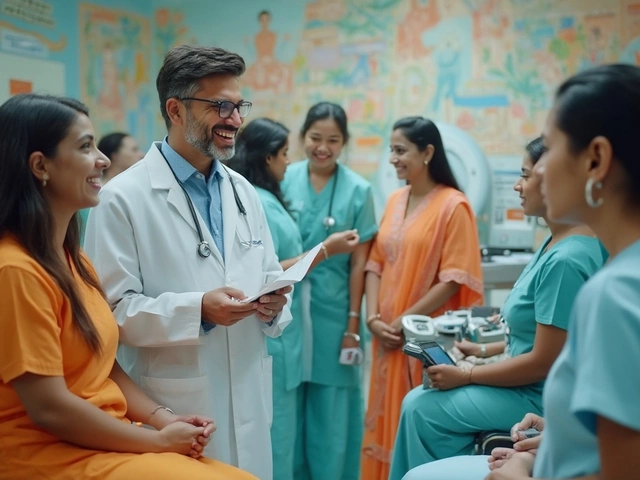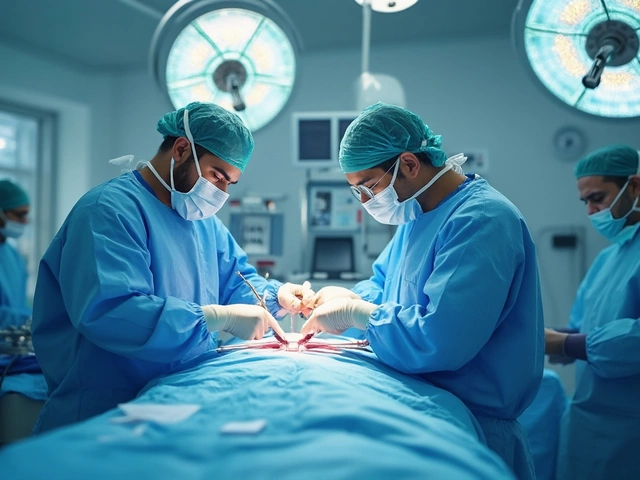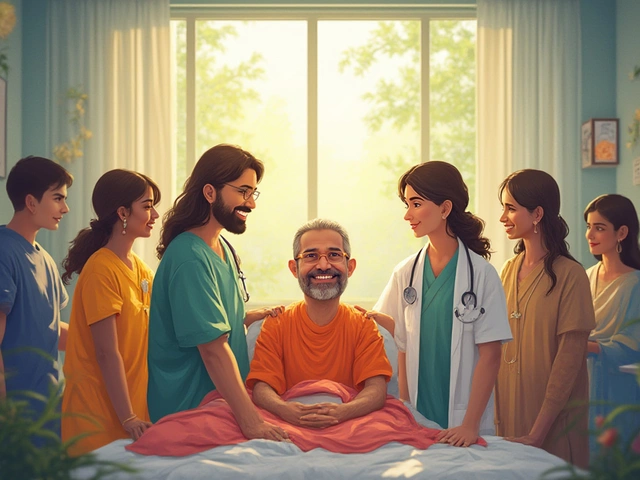Heart surgery sounds intimidating, right? But did you know that some heart surgeries are considered incredibly safe these days? Yep, thanks to cutting-edge technology and skilled surgical teams, the risk factors have significantly decreased. We're talking about procedures where every tiny detail is dedicated to making sure you come out of it safe and sound.
One of the reasons safety is better now is the use of advanced imaging and surgical tools. These high-tech gadgets allow surgeons to see exactly what's happening inside your heart with mind-blowing accuracy. Plus, there’s a talented team of medical pros who are well-trained in handling these complex tools, reducing the chances of things going sideways.
- Why Safety Matters in Heart Surgery
- Technologies Enhancing Surgical Safety
- Low-Risk Heart Procedures
- Preparing for a Safe Surgery
- Questions to Ask Your Surgeon
Why Safety Matters in Heart Surgery
When it comes to heart surgery, safety is not just a checklist item—it's the top priority. But why does it matter so much? For starters, the heart is, well, the heart of your whole body. Everything depends on it. A successful and safe surgery means the heart can continue to do its job without a hitch.
Safe surgeries involve reducing risks of complications like infections, blood clots, or any kind of trauma to the body. Hospitals have specific protocols to prevent these, like maintaining sterile environments and using advanced technology for precision.
Knowing a surgery is safe brings peace of mind to patients and their families. It allows everyone to focus on recovery rather than worrying about complications. It's simple logic—the safer the procedure, the better the outcomes.
Did you know that around 95% of heart surgeries are successful in advanced medical centers? This high rate is thanks to the combination of expertise and technology. For instance, robotic-assisted heart surgeries are designed to be minimally invasive, reducing risk factors significantly.
Overall, the emphasis on safety improves the quality of life after heart surgeries. Patients can expect quicker recoveries, fewer hospital stays, and a faster return to normal activities. Plus, with top-notch surgical teams trained to handle these procedures, the risks are managed efficiently, making heart surgery safer than ever.
Technologies Enhancing Surgical Safety
When it comes to heart surgery, the tools and technologies involved can make a massive difference in how safe the procedure is. Innovations over recent years have made surgeries not only safer but also more effective.
One major leap forward is the use of robotic-assisted surgery. These robots, controlled by skilled surgeons, allow for more precise movements than the human hand alone. This precision reduces the risk of complications and speeds up recovery time. In a study from the American Journal of Surgical Robotics, it was noted that robotic surgeries have less than a 1% complication rate.
"Robotic surgery provides unparalleled precision in cardiac procedures, decreasing the likelihood of errors."—Dr. Albert Chang, Cardiac Surgeon
Another game-changer is imaging technology, like 3D echocardiograms and MRI scans, which give surgeons a highly detailed view of the heart. These tools help doctors plan surgeries down to the smallest details, minimizing risks and enhancing overall safety.
If we're talking numbers, reports suggest that the introduction of advanced imaging has improved surgical outcomes by up to 20%. To put it in perspective, these tools help identify issues that might not be visible with older methods.
There's also the concept of hybrid operating rooms. These are surgical theaters that combine the capabilities of a traditional operating room with advanced imaging equipment. This setup allows for less invasive cardiac procedures and means surgeons can switch to different techniques if needed, all without moving the patient. It’s like having all the possible resources at the surgeon's fingertips.
Finally, let's not forget about telemedicine. Surgeons can now consult with experts across the globe in real-time if they encounter unexpected situations. This global reach ensures that the patient benefits from collective expertise, further boosting the safety of the procedure.
All these innovations don't just make surgeries safer; they also provide reassurance. Knowing that your procedure involves the latest in medical technology helps ease a lot of those pre-surgery jitters. Remember, technology in the operating room is all about keeping you safe and sound.
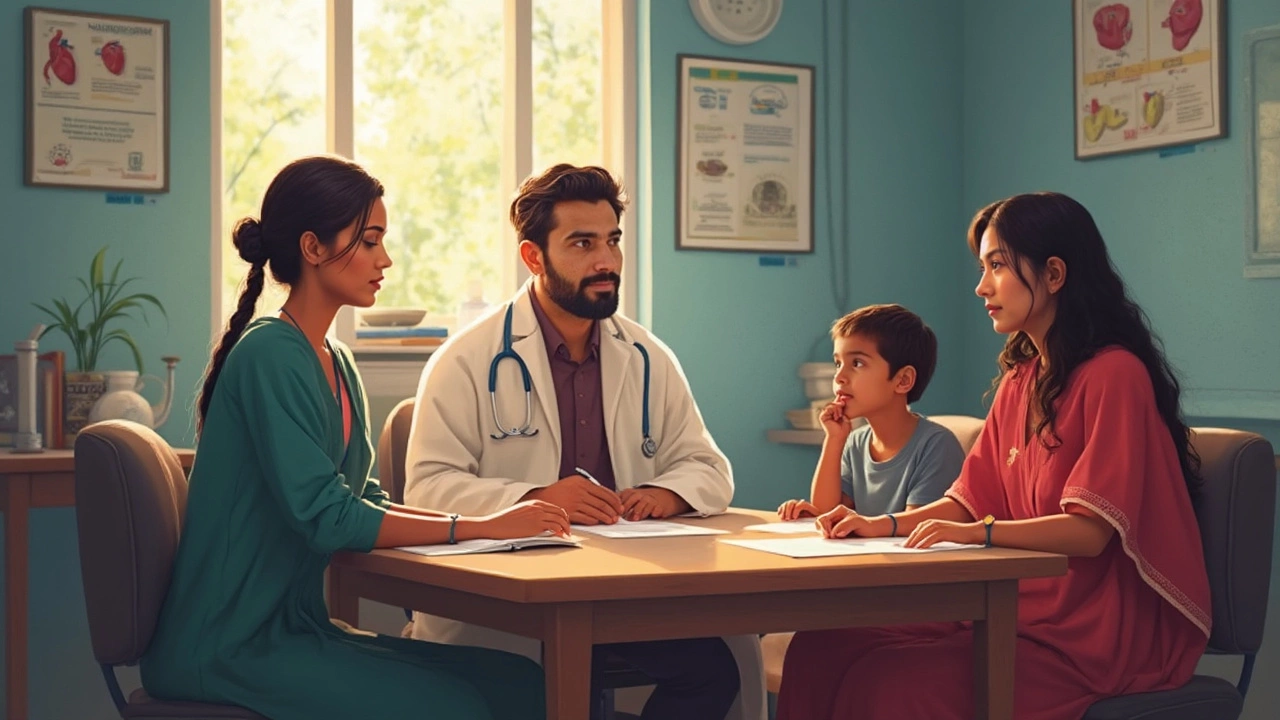
Low-Risk Heart Procedures
When it comes to heart surgery, some procedures are now considered low-risk. These surgeries have a high success rate and fewer complications, thanks to advances in medical science. Let’s chat about a few of these procedures that focus on safety.
One popular low-risk procedure is Angioplasty. It's a minimally invasive process where a small balloon is inflated inside clogged arteries to help improve blood flow. Doctors love it because it often doesn’t even require an overnight hospital stay. That's pretty convenient, right?
Another procedure is the insertion of a Pacemaker. These tiny devices help regulate heartbeat and are typically placed under local anesthesia. The best part is that recovery time is relatively short, allowing patients to get back to their routine activities quickly.
For those with minor heart valve issues, a Transcatheter Aortic Valve Replacement (TAVR) can be a lifesaver. TAVR offers an alternative to open-heart surgery, using tiny catheters to replace damaged valves without having to crack open the chest. This means a shorter hospital stay and a faster road to recovery.
- Angioplasty: Minimally invasive, speedy recovery.
- Pacemaker insertion: Local anesthesia, quick recovery.
- TAVR: Non-invasive, less recovery time.
Now, let's add some numbers to the conversation. A study showed that over 85% of angioplasty patients return to normal activity within a week, while TAVR procedures have a hospital discharge rate of under five days. These stats show how modern heart care balances safety and efficiency.
Preparing for a Safe Surgery
Getting ready for heart surgery isn't just about showing up on the big day; it's a process that starts weeks in advance. Taking certain steps can really help make sure everything goes smoothly when that day comes. You might be wondering, what exactly should I do? Here's a breakdown that can keep things safe and stress-free.
Consult with Your Doctor: This is the time to get all your questions answered. Your doctor can shed light on what you need to do beforehand, like adjusting your meds or stopping certain ones altogether.
"Patients who actively participate in their pre-surgical preparations often experience smoother recovery periods," says Dr. Sarah Johnson, a leading cardiologist.
Health Check-ups: Undergo additional tests as recommended. It's crucial to have a clear understanding of your health status right before surgery. These might include blood tests or chest X-rays.
Build a Support System: Having family and friends ready to assist you post-surgery can make a huge difference. They can help ease your mind and take care of errands while you recover.
- Stay Informed: Read up on the chosen procedure, but don't get overwhelmed with complex details. Just enough to know what's happening.
- Eat Right: Nutrition should be a top priority. A healthy diet supports your body's ability to heal and bounce back.
- Avoid Smoking and Alcohol: Quite simply, these can wreak havoc on your recovery. Kicking them out of your routine is highly recommended.
- Exercise Lightly: Keep active without overdoing it. Gentle exercises keep your heart and body in shape for the upcoming challenge.
Another way to prepare is by understanding the surgical procedure itself. Don't hesitate to ask your surgical team for a walk-through of the process. Knowing what to expect at each step can ease any anxiety you might feel. Safety in medical procedures often comes down to preparation, so the more you communicate and prepare, the better your experience will be.

Questions to Ask Your Surgeon
Before jumping into a heart surgery, it's crucial to have a good chat with your surgeon. Here are some questions to help you feel more prepared and ensure your surgery is as safe as possible.
- What is your experience with this specific procedure? You'll want a surgeon who has done this heart surgery numerous times successfully.
- What are the potential risks and complications? Every surgery comes with risks. Knowing them beforehand can help you weigh the pros and cons.
- What precautions will be taken to ensure safety? Understanding the measures in place for minimizing risks gives you peace of mind.
- How will post-operative care be managed? Knowing the recovery process and support system helps in planning your aftercare effectively.
- What are the success rates for this operation? Surgeons can offer data on outcomes which can be reassuring. If they're hesitant, consider it a red flag.
- What lifestyle changes should I make before and after surgery? Sometimes, adjusting habits can make a big difference in recovery.
Did you know that the overall success rate of cardiac surgeries in developed countries is above 95%? Having this context alongside your discussion with the surgeon can provide some comfort.
Getting answers to these questions not only builds trust but also gives you a clearer picture of what to expect. Remember, your health is a big deal, so make sure all your concerns are addressed.

